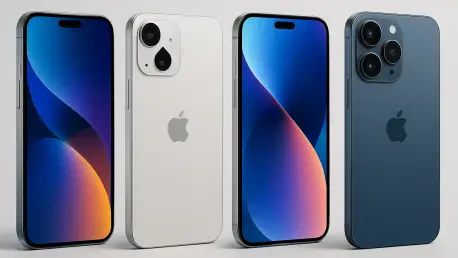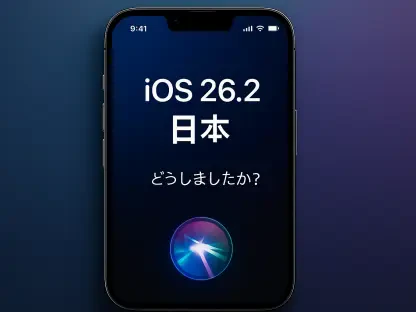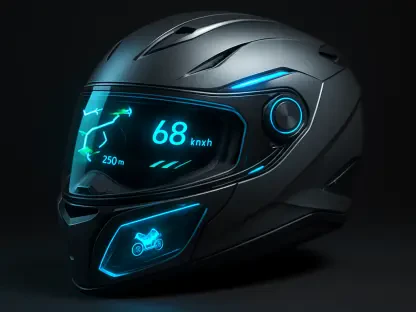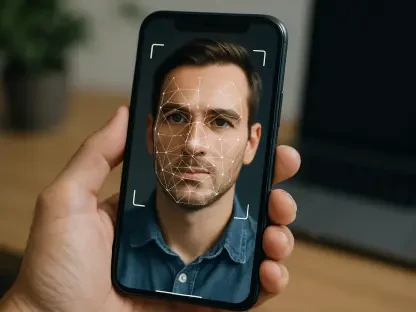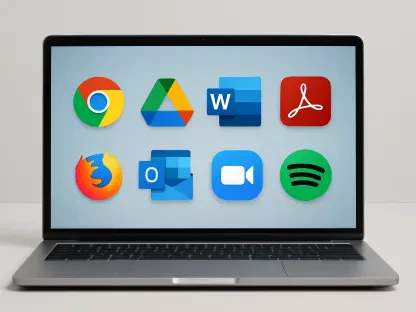I’m thrilled to sit down with Nia Christair, a renowned expert in mobile technology, whose deep knowledge spans mobile gaming, app development, device design, and enterprise solutions. With Apple’s highly anticipated hardware event on the horizon, rumored to be happening on September 9, we’re diving into the buzz surrounding the iPhone 17 lineup, the intriguing iPhone Air, and other exciting updates. In this conversation, we’ll explore the potential design innovations, the impact of new features on user experience, and how Apple’s latest moves might shape the competitive landscape of smartphones and wearables.
What can you tell us about the rumored design updates for the iPhone 17, particularly the larger 6.3-inch screen and the shift to a 120Hz display?
I’m really excited about these rumored changes. A 6.3-inch screen, even if it’s just a slight bump from the iPhone 16, could make a big difference in how content feels—think more immersive videos or easier multitasking. And the 120Hz display? That’s a game-changer for the base model. It’s been a Pro feature for a while, offering smoother scrolling and animations. Bringing it to the standard iPhone 17 suggests Apple is blurring the lines between base and premium models, which could make this phone feel like a steal for a lot of users.
How do you think the rumored 24-megapixel front camera on the iPhone 17 will enhance the user experience, especially for selfies and video calls?
A 24-megapixel front camera is a significant leap from what we’ve seen in past base models. It means sharper, more detailed selfies and better performance in low-light conditions, which is huge for anyone who’s into social media or just loves capturing moments. For video calls, this could translate to clearer visuals, making remote work or family chats feel more personal. I think Apple is tapping into how much we rely on front cameras now—it’s not just a secondary feature anymore, it’s a core part of how we communicate.
With whispers of new colors like purple and green for the iPhone 17, how do you see these choices influencing Apple’s fanbase?
Color is such a personal thing, and Apple knows how to play that card. Purple and green, if done right, could feel fresh and bold—especially if they lean into vibrant or unique shades. These colors often appeal to younger users or those who want their device to stand out. It’s a subtle way for Apple to keep the base model exciting without major hardware overhauls. I think fans will eat it up, especially if the finishes complement the rumored design tweaks.
Let’s talk about the iPhone 17 Pro’s rumored rectangular camera bar design. What’s your take on how this could change the phone’s aesthetic or functionality?
The rectangular camera bar stretching edge-to-edge is a striking departure from the current square bump. Visually, it could make the Pro model look more modern and balanced, especially with the Apple logo centered for symmetry. Functionally, it might allow for better sensor placement or even hint at upgraded camera tech, though we don’t have specifics yet. I think it’s a design risk, but if executed well, it could set the Pro apart as a statement piece in Apple’s lineup.
There’s talk of the iPhone 17 Pro switching from a titanium band to aluminum. What might be driving this change, and how could it impact the phone’s feel or price?
Switching to aluminum from titanium is likely a cost-saving move. Titanium is premium and durable, but it’s expensive to produce at scale. Aluminum could bring the price down a bit while still maintaining a high-end feel—plus, it’s lighter, which some users might prefer. I suspect Apple is trying to balance profitability with accessibility, especially if they’re targeting a broader audience for the Pro. It might not feel as exclusive as titanium, but it could make the device more approachable for those on the fence about upgrading.
For the iPhone 17 Pro Max, rumors point to a thicker body to house a larger battery. How critical is battery life to users, and do you think the added bulk is worth it?
Battery life is consistently one of the top concerns for smartphone users. We’re all glued to our devices, whether for work, streaming, or gaming, so a bigger battery in the Pro Max could be a huge selling point. A slightly thicker body is a small trade-off if it means lasting through a full day—or even two—without a charge. I think most users would welcome this, especially power users who push their phones to the limit. It’s a practical upgrade over chasing pure aesthetics.
The iPhone Air is rumored to be the thinnest iPhone ever at 5.5 mm. What do you think is behind Apple’s push for such a slim design?
Apple’s focus on a super-slim iPhone Air feels like a response to market trends and competition. Slimmer phones from brands like Samsung are gaining attention for their sleek, futuristic appeal, and Apple wants to stay ahead of the curve. It’s also a way to differentiate the Air from the rest of the lineup—think of it as a style statement for users who prioritize design over everything else. Plus, it could be a stepping stone to future innovations like foldables, where thinness is key.
How might the iPhone Air’s single rear camera stack up against the dual cameras on the current iPhone Plus, and could this be a drawback for some buyers?
Going with a single rear camera on the iPhone Air is a bold compromise. Compared to the dual setup on the Plus, which offers versatility like ultra-wide shots, the Air might feel limited for photography enthusiasts. It could still deliver great quality—Apple’s single-lens cameras are often impressive—but users who rely on varied focal lengths might hesitate. I think this will appeal more to casual users who prioritize design over camera prowess, but it could alienate some of the Plus’s fanbase.
There’s a rumor that the iPhone Air might skip a bottom speaker due to its thin design. How could this impact the audio experience for users?
If the iPhone Air lacks a bottom speaker and relies solely on the front earpiece, the audio experience could take a hit. Stereo sound or immersive media playback might feel underwhelming, especially for things like watching videos or gaming without headphones. Apple might compensate with software tweaks or enhanced earpiece output, but it’s a noticeable downgrade for a device in this price range. I think it’s a risky move unless they’ve got a clever workaround up their sleeve.
With a rumored price of $950 for the iPhone Air, do you think it offers a compelling value compared to other models in the lineup?
At $950, the iPhone Air sits in a tricky spot. It’s pricier than the base iPhone 17’s rumored $800 but cheaper than the Pro models. For that price, you’re likely getting a stunningly thin design and a big 6.6-inch screen, but sacrifices like the single camera and potential audio limitations might make some buyers pause. I think it’ll appeal to those who value style over specs, but for others, the base or Pro models might feel like a better bang for the buck.
What’s your forecast for how the iPhone Air will compete in the trend of slimmer smartphones against devices like the Samsung Galaxy S25 Edge?
I think the iPhone Air has a strong shot at standing out in the slim smartphone race. At 5.5 mm, it’s rumored to be thinner than the Galaxy S25 Edge’s 5.8 mm, and Apple’s design language often resonates more with consumers looking for a polished, cohesive experience. If they nail the build quality and market it as the ultimate sleek device, it could pull attention away from competitors. My forecast is that it’ll carve out a niche for style-focused buyers, but its success will hinge on how well Apple balances those design trade-offs with functionality.
